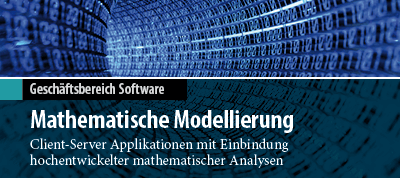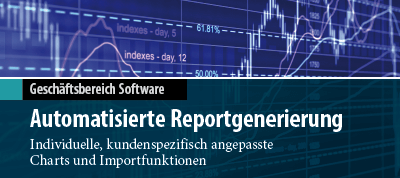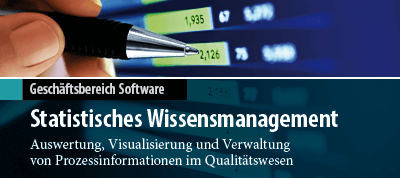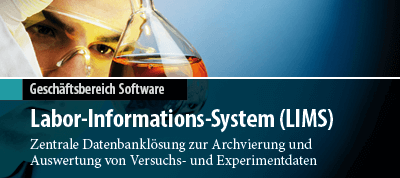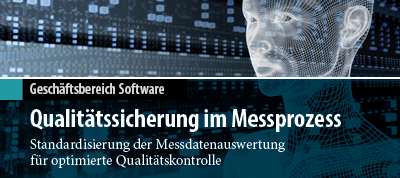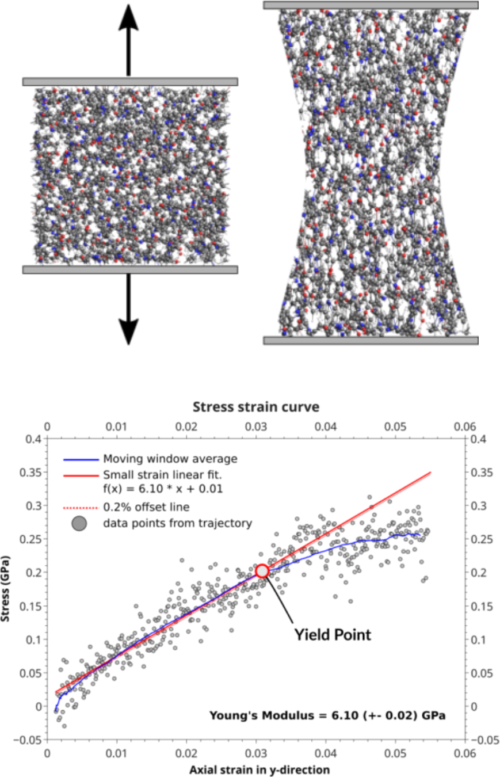Versionshistorie von ReaxFF: 2018 - 2012
Im Folgenden sehen Sie einen Überblick über die neuen Schlüsselfunktionen der jeweiligen Version.
ReaxFF 2018
Neu in ReaxFF 2018
ReaxFF has been included in the AMS driver as one of the engines, which means that all tasks that can be performed with the AMS driver are also available for ReaxFF. However, not all tasks available in the classic ReaxFF standalone program have already been ported to AMS, so in the 2018 release of the Amsterdam Modeling Suite, the standalone ReaxFF program and the ReaxFF engine coexist. This manual mostly describes the standalone ReaxFF program. For documentation on how to use ReaxFF in AMS, see the special page on ReaxFF as an AMS engine as well as the AMS driver manual.
Besides the addition of ReaxFF as an AMS engine, the standalone ReaxFF 2018 program has been extended with the following features:
- The CMA-ES method for force-field parameter optimization;
- Initial implementation of the collective variable-driven hyperdynamics (CVHD);
- Bond-boost method for accelerating specified reactions;
- Heat pump and HEX NEMD methods to study thermal conductivity;
- Temperature profile along the cell coordinate vectors, which is very useful in combination with NEMD;
- Per atom stress tensor can be computed with ReaxFF;
- Local temperature (averaged across atoms within given distance);
- Analysis of surface reactions;
- On-the-fly analysis of reaction events;
- Elastic wall restraint (a must-have when applying external electric field);
- Performance improvements and bug-fixes.
ReaxxFF 2017
Neu in ReaxFF 2017
In comparison to ADF-ReaxFF 2016, the 2017 release offers the following new functionality:
- Nose-Hoover chains thermostat
- Anderson barostat with a Nose-Hoover chains thermostat (isotrpic, anisotropic and full cell fluctuation)
- e-Reax - dynamics with explicit electrons
- Extendable FF Optimizer framework
- Vibrational frequency analysis
- Quasi-Newton geometry optimization
- Improved molecule gun
ReaxxFF 2016
Neu in ReaxFF 2016
- Chemtrayzer: Chemical Trajectory Analyzer
Automated discovery of reaction pathways, rate constants, and reaction networks using Chemtrayzer (M. Döntgen et al.) - New force fields
See the manual for the list of available force fields. - ACKS2
Support for the ACKS2 charge equilibration method (given a suitable force-field) - Performance improvements for very narrow and long unit cells.
Scripting
- ASE interfaced with the ADF modeling suite programs
The Atomic Simulation Environment (ASE) tool collection suite was designed as a flexible, easy-to-use, and customizable approach for the manipulation of quantum chemical models as well as for setting up and running the calculations required and for the analysis of the final results. D. Coupry and T. Soini at SCM have built ASE calculators for the main codes in the ADF Modeling Suite, thus opening up several of the methods in ASE. - PLAMS: Python Library for Automating Molecular Simulation
The PLAMS Python library, developed at SCM by Michał Handzlik, aims at facilitating scripting and work-flow automation in molecular modeling. PLAMS takes care of input preparation, job execution, file management and output processing and comes with interfaces to ADF, BAND and DFTB. SCM is making PLAMS available to the community as open-source (LGPL), contact SCM for details. Together with the related pyADF project led by Prof. Christoph Jacob, PLAMS is one of the components in the ongoing open-source project Computational Chemistry made Easy , led by Prof. Lucas Visscher, in which SCM also participates (contact Prof. Visscher or SCM for more information). - FlexMD (Flexible multi-scale Molecular Dynamics simulation): new features
FlexMD is a python library developed by Rosa Bulo's group at Utrecht University for molecular dynamics, specialized in multi-scale simulations. It is currently an expert option that requires scripting experience. The 2016 release includes a tabulated PBE-based force field for water suitable for QM/MM simulations. The center of the QM region can now also be defined more flexibly, e.g. as the position of a hydronium or hydroxide ion, important for simulating proton transfer processes. - adfprep and adfreport : New features for the command line tools adfprep (job preparation) and adfreport (results extraction):
- Support for ADF, BAND, ReaxFF, DFTB, UFF, Mopac
- Fragment support
- Geometry changes, modify atom types, add groups
- Support for SDF files
ReaxxFF 2014
Neu in ReaxFF 2014
- Changes in the dihedral angle and conjugation terms
To solve a discontinuity problem at small bond orders for torsion angle and conjugation contributions the formula for f(BO). These terms correspond to expressions for f_10 (eq. 10b) and f_12 (eq. 11b) in the "ReaxFF: A Reactive Force Field for Hydrocarbons", J. Phys. Chem. A 2001, 105, 9396-9409 paper. The new expression for each term in f_10 is now [1 - exp(-2 * lambda_23 * BO**2)] and in f_12 it is now sin(BO*pi/3)**4. The new expressions ensure correct asymptotic behavior for the dE/dBO for BO?0 - Grand cononical Monte-Carlo (GCMC)
The GCMC as describe in two papers by Senftle et al. has been included as a tool with ReaxFF. - Monte-Carlo force-field parameter optimization
An easy to use parallel optimization method for force-field parameters has been added. The method is based on the paper by Eldhose Iype et al.
ReaxxFF 2013
Neu in ReaxFF 2013
- ReaxFF can now treat an unlimited number of atoms
- parallel scaling is greatly improved using spatial distribution
- automatic calculation scale-up by repeating unit cell in a, b, and/or c direction
- force-bias Monte-Carlo implemented for accelerated dynamics
- force field-dependent Reaxff-lg dispersion correction








